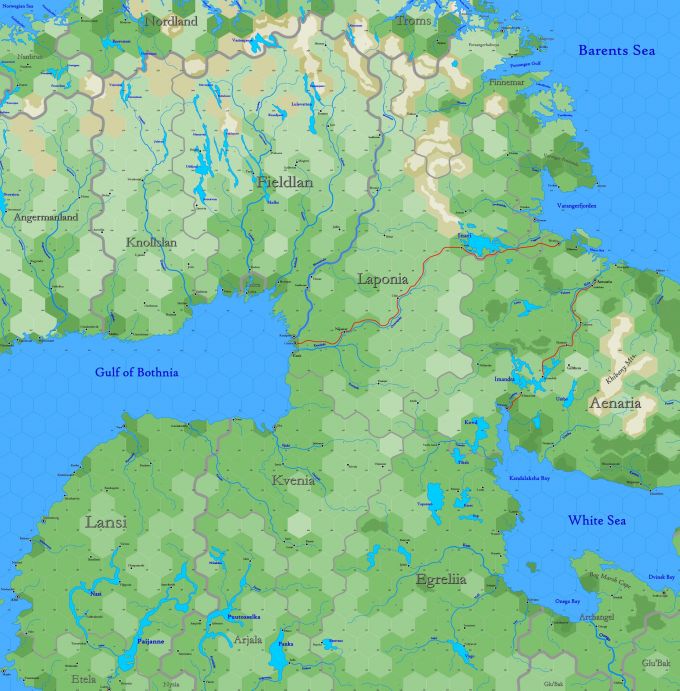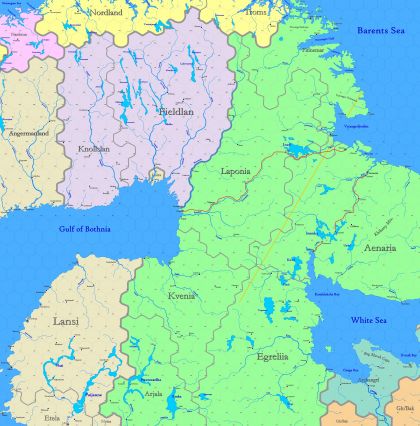Difference between revisions of "Map B.02 - Lapland"
Tao alexis (talk | contribs) |
Tao alexis (talk | contribs) |
||
| Line 42: | Line 42: | ||
{| class="wikitable" style="text-align: center; background-color:#d4f2f2; width: 40%;" | {| class="wikitable" style="text-align: center; background-color:#d4f2f2; width: 40%;" | ||
|- | |- | ||
| − | | style="width: | + | | style="width: 120px|'''[[Map A.01 - Greenland Sea|A1: Greenland Sea]]''' || style="width: 120px|'''[[Map A.02 - East Spitsbergen|A2: East Spitsbergen]]''' || colspan="2"; style="width: 120px|'''[[Map A.03 - Jotunheim|A3: Jotunheim]] |
|- | |- | ||
| − | | style="width: | + | | style="width: 120px|'''[[Map B.01 - Lofoten|B1: Lofoten]]''' || colspan="2"; style="width: 120px|'''B2: Lapland''' || style="width: 120px|'''[[Map B.03 - Yak'Margug|B3: Yak'Margug]]''' |
|- | |- | ||
| − | | style="width: | + | | style="width: 120px|'''[[Map C.01 - North Sea|C1: North Sea]]''' || style="width: 120px|'''[[Map C.02 - Baltic|C2: Baltic]]''' || style="width: 120px|'''[[Map C.03 - Lithuania-Poland|C3: Lithuania-Poland]]''' || style="width: 120px|'''[[Map C.04 - Upper Volga|C4: Upper Volga]]''' |
|} | |} | ||
Latest revision as of 02:25, 11 November 2023
The Lapland map shows lands of Scandinavia between the Barents and the White Seas, and the Gulf of Bothnia. Within these lands, dominion is primarily held by elves and gnomes, with humans and other races inhabiting the peripheral regions. Contemporary political entities encompass Norway, Sweden, Finland and Russia. Latitude ranges from 77.22°N south to 62.96°N. The map's hexes are 20 miles in diameter. The total area is about 366,000 square miles.
This remote and enigmatic terrain is a land where the supernatural and folklore hold sway, with kingdoms that are near-mystical in their extent through the vast wilderness. Fantastical creatures inhabit hidden enclaves deep in the dense forests, beneath the roots of ancient trees, and within the craggy, snow-capped mountains. The peoples here have a rich tradition of storytelling that is steeped in polytheism rather than belief in a single god, shaped by Norse gods and other pantheons.
The elvish principality of Ulthua acts as a benevolent guardian over the region, whilst the gnomes prioritize the riches of the earth over political expansion. Only at the outskirts of this tranquil domain do ambitions for warfare and conquest arise. The unforgiving winter, however, renders such endeavors nearly insurmountable.
Features
A range of natural land and water formations comprise the area, mostly made of northern forests and shield land. The coasts are rocky and notable for their deep fjords, which are warmed in the winter by the furthest reaches of the North Atlantic Current.
Hydrographic
Gulf of Bothnia. A northern arm of the Baltic Sea, the gulf is brackish and experiences extreme seasonal variations, with ice covering its surface during harsh winters, sometimes used as a vital ice road for transportation. In summer, the gulf is a source of livelihood for coastal communities. Trade with the Baltic is strategically important for the timber and furs that are exported to all of Europe.
Barents Sea. This vast part of the Arctic Ocean extends from Scandinavia to the archipelago of Svalbard. Characterized by its extreme cold, icy conditions, and relatively high salinity compared to other Arctic seas, the Barents is home to a diverse marine ecosystem, including seabirds, seals, and various fish species; monsters include kraken and sea serpents. Naught travels beyond the sea's coast except whaling ships, while few ships enter the sea's small Norwegian and Ulthuan ports.
White Sea. Located as an arm of the Barents Sea, the sea is bordered by the rugged coastlines of the Kola Peninsula. Due to its unusually low salinity, the body of water is a unique brackish environment. In winter, it freezes over, creating a breathtaking ice-covered landscape that is both picturesque and challenging for navigation. A far-reaching trading route connects the sea with England and Holland.
Topographic
Fennoscandian shield. Spanning nearly all the land on the map, this ancient landscape is dominated by boreal forests, countless lakes, and countless rivers, including the mighty River Kemi. This area is a remote and sparsely populated frontier. The varied wildlife population includes reindeer, brown bears, gray wolves, wolverines, arctic foxes, lynxes, moose and beavers; monsters include trolls, giants, treants and worgs. The topography is a mix of taiga, coniferous forests and tundra, with permafrost and extremely harsh weather conditions.
Scandinavian mountains. A dramatic and rugged natural barrier that stretches along the western border of Vastenjaur, dividing it from the fjords of Troms and Nordland, reaching into Finnemar and Laponia. With imposing peaks, deep valleys and pristine alpine landscapes, these are particularly striking during the winter months when they are covered in snow. The highest peak in this range is Mount Galdhøpiggen, standing at 8,100 ft., making it the highest mountain in both Norway and Northern Europe; peaks like it are characterized by rocky terrain and are often capped with glaciers and snowfields, especially during the colder months.
Khibany mountains. A prominent mountain range located in the Kola Peninsula, distinct for their striking topography and unique geological composition. The mountains are notable for their steep, rocky slopes and unusual rock formations, amid a rugged, craggy terrain, deep valleys and numerous alpine lakes. The highest peak is Yudychvumchorr, which reaches an elevation of about 3,940 ft.
Political Entities
Ulthua. Elvish principality; consists of six provinces: the great thann of Aenaria, and the thanns of Arjala, Egreliia, Finnemar, Kvenia and Laponia. Includes lands that were originally occupied during the Bronze Age by the elvish empire of Colyan-ar, which collapsed. Ulthua was raised and reorganised some 1,500 years ago.
Vastenjaur. Gnomish kingdom; consists of two provinces: the earldoms of Fieldlan and Knollslan. Remnant of the Vepsian empire of the Bronze Age. Friendly with Ulthua and Sweden.
Sweden. Human kingdom; shown are four provinces: the county of Angermanland; the duchies of Etela and Lansi; and the enclave county of Lulea. Aggressive and presently at the height of its power, following the Thirty Years War; its border with Ulthua is tense.
Denmark & Norway. Human kingdom; shown are two provinces: the counties of Nordland and Troms. Has little political influence in the region.
Archangel. Halflingen county. Friendly with Ulthua, supported by foreign trade interests, is nevertheless harried by the gnoll peoples to the east.
Nanbrun. Gnomish thann. Also a remnant of the Vepsian empire; friendly with Denmark & Norway.
Bjarmaland. Gnoll kingdom; shown is the barony of Glu'Bak. Aggressive and hateful of both elves and halflings, weakened by is backward development.
Adjacent Maps
| A1: Greenland Sea | A2: East Spitsbergen | A3: Jotunheim | |
| B1: Lofoten | B2: Lapland | B3: Yak'Margug | |
| C1: North Sea | C2: Baltic | C3: Lithuania-Poland | C4: Upper Volga |
See Sheet Maps

